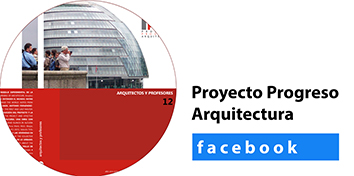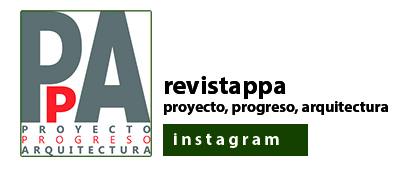LA PLANTA ÚNICA COMO TIPO RESISTENTE A LA ESCALA / the single plan as a type resistant to scale
DOI:
https://doi.org/10.12795/ppa.2014.i10.06Palabras clave:
neutro, contenedor, diáfano, tamaño, técnica, escala / neutral, container, diaphanous, size, technique, scaleResumen
RESUMEN El sistema capitalista ha generado dos de los modelos espaciales de indiferencia funcional más extremos: por un lado, el espacio tecnificado y repetido del edificio de oficinas en altura, encarnado por la ‘planta tipo’ y, por otro, el espacio diáfano y extenso del gran contendor, que responde a la lógica de lo que llamaremos ‘planta única’. En los edificios construidos para la industria automovilística y bélica americana se encuentra el germen de un tipo que servirá de modelo para los nuevos espacios de consumo de bienes y servicios de la ciudad post-industrial. En ella, la identificación del rascacielos con el centro y del contenedor con la periferia sigue vigente, porque la densidad necesaria del primero y la ocupación extensiva del segundo hacen que resulte imposible invertir los términos. Sin embargo, ambos representan el desarrollo estrictamente pragmático de los principios de la ‘planta libre’ como sistema operativo genérico, dando lugar a construcciones de gran tamaño que ponen a prueba la resistencia a la escala del propio tipo. Tomando como referencia la neutralidad característica de la ‘planta única’ el texto analiza el comportamiento frente al cambio de tamaño de sus dos configuraciones complementarias: la gran sala hipóstila y la gran sala diáfana.
SUMMARY The capitalist system has generated two of the most extreme spatial models of functional indifference: on the one hand, the technified and repeated space of the high-rise office building, incarnated by the “typical plan” and, on the other, the diaphanous and extensive space of the large container, which responds to the logic of what we will call “single plan”. In the buildings constructed for the American automobile and military industries is the germ of a type that would serve as a model for the new spaces for consumption of goods and services of the post-industrial city. In that city, the identification of the skyscraper with the centre and the container with the periphery is still valid, because the necessary density of the first and the extensive occupation of the second mean that it is impossible to invert the terms. However, both represent the strictly pragmatic development of the principles of the “free plan” as a generic operating system, giving rise to large constructions that test the resistance to the scale of the type itself. Taking the characteristic neutrality of the “single plan” as a reference, the text analyses the behaviour with regard to the change of size of its two complementary configurations: the large hypostile hall and the clear-span pavillion.
Descargas
Métricas
Citas
Anthony, John: Joseph Paxton: An Illustrated Life of Sir Joseph Paxton 1803 - 1865. Aylesbury: Shire, 1973.
Auerbach, Jeffrey A.: The Great Exhibition of 1851: A Nation on Display. New Haven, CT: Yale University Press, 1999.
Banham, Reyner: A Concrete Atlantis: U.S. Industrial Building and European Modern Architecture, 1900-1925. Cambridge, Mass: MIT Press, 1986. [Ed. consultada: La Atlántida de hormigón: edificios industriales de los Estados Unidos y arquitectura moderna europea, 1900-1925. Madrid: Nerea, 1989].
Carter, Peter: Mies van der Rohe at Work. New York: Praeger, 1974. [Ed. Consultada: London: Phaidon, 1999].
Goldsmith, Myron: The Tall Building: the Effects of Scale, IIT, Chicago, 1953 (Tesis doctoral no publicada, revisada en 1977 y 1986). [Versión consultada en: Goldmith, Myron; Werner Blaser (Ed.): Buildings and Concepts. New York: Rizzoli International Publications, 1987. pp. 8-22].
Hildebrand, Grant: Designing for Industry: The Architecture of Albert Kahn. Cambridge, Mass: The MIT Press, 1974.
Koolhaas, Rem: S,M,L,XL. New York: Monacelli Press, 1995.
Lambert, Phyllis (Ed.): Mies in America. Montreal: Canadian Centre for Architecture, 2001.
Levine, Neil: “The Significance of Facts: Mies’s Collages Up Close and Personal”. En Assamblage 37. Chicago: Massachusetts Institute of Technology, 1998. pp. 70-101.
Mathews, Stanley: From Agit-Prop to Free Space: The Architecture of Cedric Price. London: Black Dog Pub. Ltd, 2007.
Nelson, George: Industrial Architecture of Albert Kahn, Inc. New York: Architectural Book Publishing Company, Inc, 1939.
Paxton, Joseph: What Is to Become of the Crystal Palace? London: Bradbury & Evans, 1851.
Thompson, D’Arcy: On Growth and form. Cambridge: University Press, 1917. [Ed. consultada: Cambridge: University Press, 1945].
Descargas
Publicado
Cómo citar
Número
Sección
Licencia
Las ediciones impresa y electrónica de esta Revista son editadas por el Secretariado de Publicaciones de la Universidad de Sevilla, siendo necesario citar la procedencia en cualquier reproducción parcial o total.
Salvo indicación contraria, todos los contenidos de la edición electrónica se distribuyen bajo una licencia de uso y distribución “Creative Commons Atribución-NoComercial-SinDerivar 4.0 Internacional” ![]() . Puede consultar desde aquí la versión informativa y el texto legal de la licencia. Esta circunstancia ha de hacerse constar expresamente de esta forma cuando sea necesario.
. Puede consultar desde aquí la versión informativa y el texto legal de la licencia. Esta circunstancia ha de hacerse constar expresamente de esta forma cuando sea necesario.
Los autores/as que publiquen en esta revista aceptan las siguientes condiciones:
- Los autores/as conservan los derechos de autor y ceden a la revista el derecho de la primera publicación, con el trabajo registrado con la licencia de atribución de Creative Commons, que permite a terceros utilizar lo publicado siempre que mencionen la autoría del trabajo y a la primera publicación en esta revista.
- Los autores/as pueden realizar otros acuerdos contractuales independientes y adicionales para la distribución no exclusiva de la versión del artículo publicado en esta revista (p. ej., incluirlo en un repositorio institucional o publicarlo en un libro) siempre que indiquen claramente que el trabajo se publicó por primera vez en esta revista.
- Se permite y recomienda a los autores/as a publicar su trabajo en Internet (por ejemplo en páginas institucionales o personales) antes y durante el proceso de revisión y publicación, ya que puede conducir a intercambios productivos y a una mayor y más rápida difusión del trabajo publicado (vea The Effect of Open Access).













